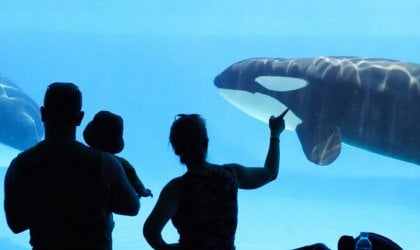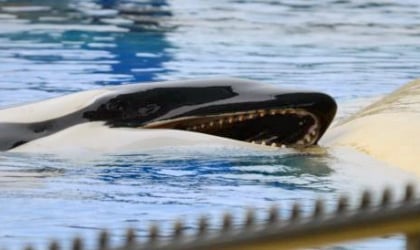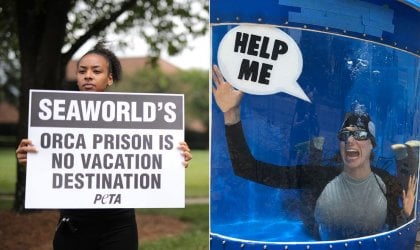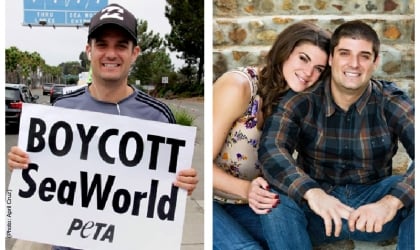Update 3/11: Our resolution will not appear on the SeaWorld ballot this year (although PETA will still speak at the shareholder meeting), as SeaWorld was able to use a procedural rule to prevent its shareholders from hearing PETA’s proposal that would create a safe environment for workers, go a long way toward mending SeaWorld’s battered image in the wake of Blackfish, and give the orcas cruelly confined to concrete tanks there some semblance of the freedom that they’ve been denied for years. The U.S. Securities and Exchange Commission barred our resolution from SeaWorld’s proxy materials this year, but the amusement park failed in its attempt to keep the public from learning about our request, which was covered on national television.
Last year when SeaWorld stock went public, PETA became shareholders so that we could attend and speak at annual meetings and submit shareholder resolutions asking for policy changes. And that’s what we’re doing.
SeaWorld’s business model is cruel and archaic. Confining orcas to tanks that can be measured in gallons is not scientifically or ethically acceptable. SeaWorld’s small cement pools cannot begin to meet the needs of these intelligent, social, long-lived, and large-bodied animals.

In this aerial view of SeaWorld, you can see how little room the orcas have. Inside the circle is Tilikum, whose nose and tail appear to be able to touch both sides of the tank at the same time.
In their rightful ocean home, orcas live in families, swim up to 100 miles a day, swim at high speeds, and dive to great depths, which is impossible at SeaWorld. PETA proposes a new “theme park” model: moving the orcas to coastal sanctuaries.
Sea pens will allow orcas greater freedom of movement and the opportunity to see, sense, and communicate with their wild relatives and other ocean animals; to feel the tides and waves; and to engage in other natural behavior that they are now denied. The orcas would have a degree of autonomy and self-determination. Family groups could be preserved, and incompatible animals wouldn’t be forced together. Caregivers would remain at a safe distance but could monitor the orcas and provide them with food as well as veterinary care if necessary.
Coastal sanctuaries could also be of educational value to the public. Visitor or “whale watching” centers could be constructed near the sanctuaries, with opportunities for remote viewing of the orcas, educational tours focused on providing information about orcas and their habitats, and cafés and gift shops.
SeaWorld has made considerable profit by capturing, breeding, confining, and putting animals on display. Our suggestion is a win-win proposal for everyone, especially the orcas, who have endured so much misery for so long.




